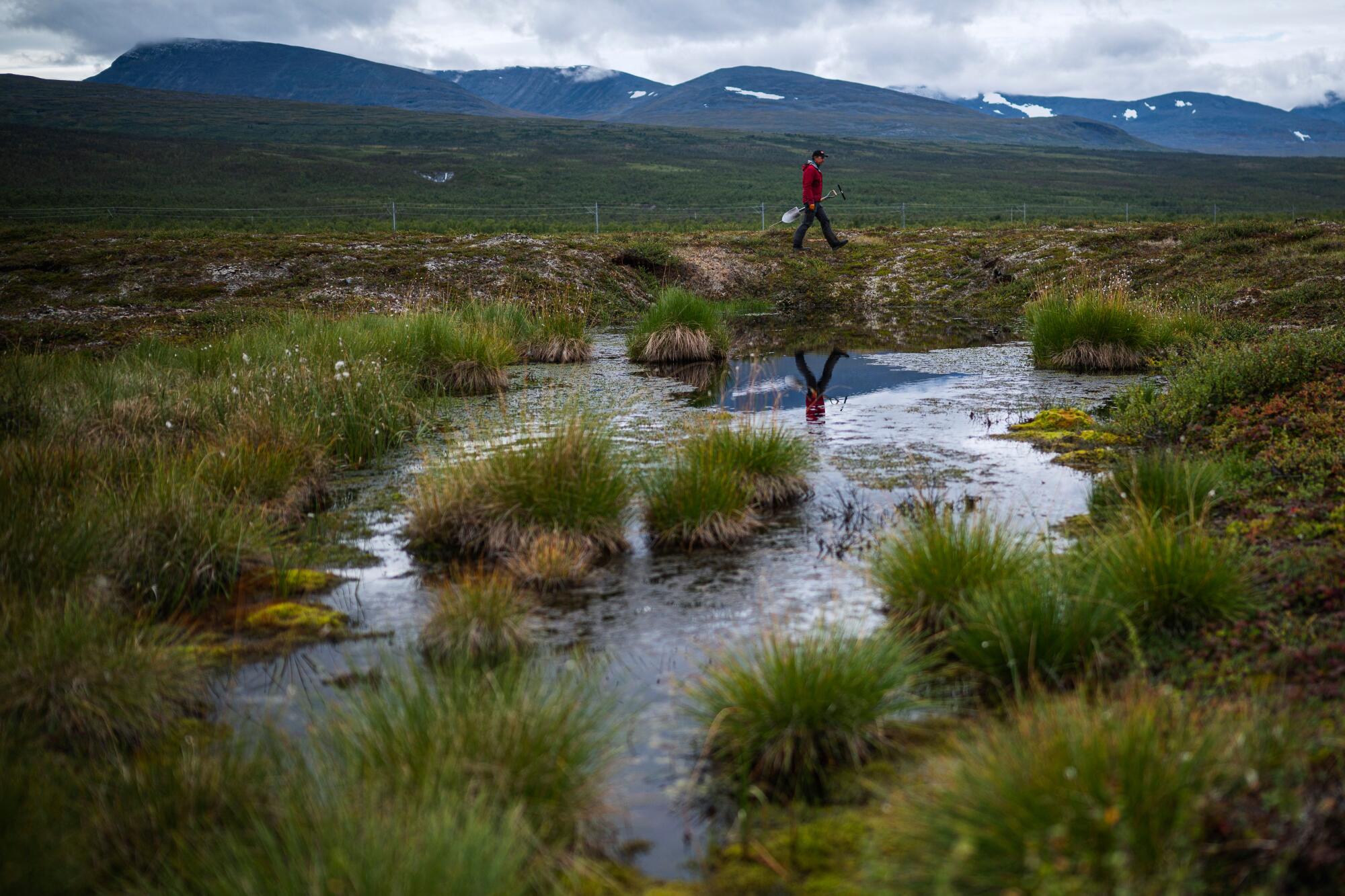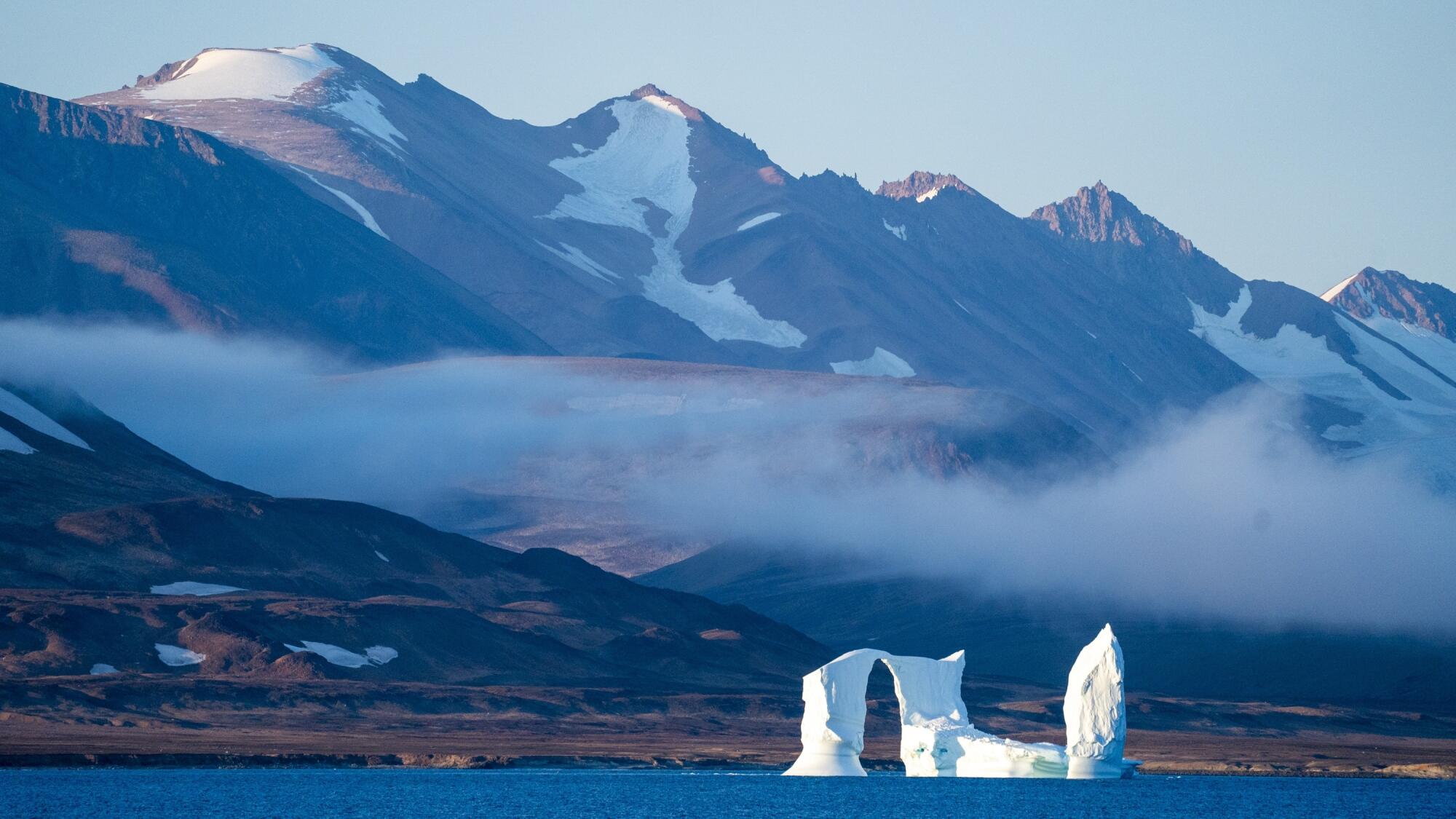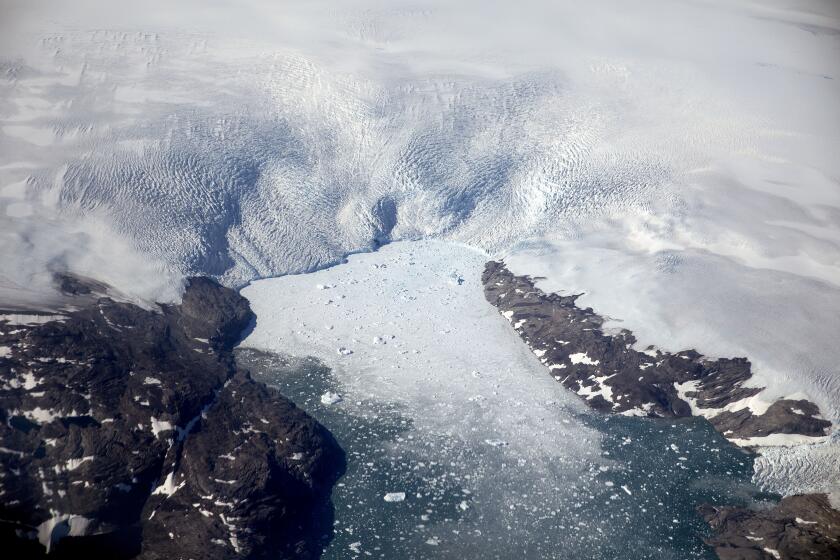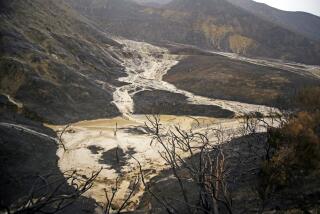
As Earth warms, the Arctic Ocean’s ability to absorb carbon dioxide from the atmosphere is waning due to melting permafrost and worsening coastal erosion, according to new research.
A study published Monday in the journal Nature Climate Change models the ways in which Arctic areas affected by permafrost erosion are releasing more carbon than they absorb. It found that by 2100, the effect may contribute to an annual increase in atmospheric carbon dioxide — a planet-heating gas — that is the equivalent of about 10% of all European car emissions in 2021.
The findings have worrisome implications about the ocean’s vital ability to act as a carbon sink, or a place that removes greenhouse gases from the atmosphere, said David Nielsen, the study’s lead author and a researcher at the Max Planck Institute for Meteorology in Hamburg, Germany.
“For the first time, we can actually put a sign — maybe not a number but a sign — on the change in the Arctic Ocean’s ability to take up CO2 from the atmosphere due to coastal erosion, and that sign is negative,” Nielsen said.
Aggressive and impactful reporting on climate change, the environment, health and science.
The study builds on previous research that found erosion of coastal permafrost is accelerating, and could increase by a factor of 2 to 3 by 2100. That’s largely because permafrost — or soil that was once permanently frozen — is beginning to thaw at a faster rate and for longer stretches of the year due to human-caused climate change, Nielsen said.
“During summer months along the Arctic coast, the soil is not frozen anymore, and so the ice is not there and there’s open water,” he said. “That makes the coast vulnerable to waves and storms which erode the coast — they mobilize this soil into the ocean.”
The erosion could reduce the ocean’s ability to absorb more than 14 million tons of CO2 per year by century’s end, the researchers found. (A typical passenger car emits about 5 tons of CO2 per year.)
Permafrost has historically stored large amounts of the planet’s carbon. (By some estimates, there is 2.5 times more carbon locked in permafrost than there is in the global atmosphere, according to the National Snow and Ice Data Center). Many researchers are concerned that the loss of permafrost will release that carbon and radically alter Earth’s traditional cycles.
“We ran different simulations, and in all simulations, no matter how we represented this organic matter, the Arctic Ocean CO2 sink is reduced, so it’s a pretty robust result,” Nielsen said.
The first ice-free days of the Arctic Ocean could occur as soon as the 2020s or 2030s — as many as 10 years earlier than previous projections.
He noted that the Arctic is already warming much more quickly than the rest of the planet, at a rate 3 to 4 times faster than the global average. But his modeling found some acute “hot spots” of permafrost erosion including Drew Point in Alaska, the Mackenzie River Delta in Canada and parts of Siberia, where local impacts include ocean acidification and adverse effects on coastal ecosystems.
Coastal communities such as Shishmaref in Alaska are also facing pressure to relocate due to intensifying erosion, storms, sea level rise and melting sea ice, which are also contributing to the loss of heritage and archaeological sites, he said.
Sea ice extent in the Arctic has declined precipitously since the 1970s, although the trend has leveled off in recent years. In July — the planet’s second-hottest month on record — Arctic sea ice extent was 7% below average, according to the European Union’s Copernicus Climate Change Service.
But permafrost, in particular, is warming at a rapid rate, with some studies showing that most of Earth’s near-surface permafrost could be gone by 2100.

As the first study to model the effects of Arctic coastal permafrost erosion on CO2 uptake, the findings help advance global knowledge of the process, according to Kay McMonigal, an assistant professor of physical oceanography at the University of Alaska Fairbanks College of Fisheries and Ocean Sciences, who did not work on the paper.
“It’s surprising in that we didn’t even know which sign of an impact this might have — if it would increase or decrease the ability of the Arctic Ocean to uptake CO2,” McMonigal said. “And they found that under a bunch of different sensitivity runs, it always decreases the ability.”
New research warns of a possible collapse in Atlantic Ocean currents due to climate change. That could fundamentally alter global weather patterns.
Though the modeling is focused on one region, McMonigal said outcomes in the Arctic will play an important role in Earth’s future climate. The study projects that coastal permafrost erosion could exert a positive feedback loop that increases atmospheric CO2 by 1.1 million to 2.2 million tons per year for every degree Celsius, or 1.8 degrees Fahrenheit, of global warming.
“It’s a pretty small area compared to the whole globe, but it still has an impact,” McMonigal said. “Arctic sea ice is melting and is expected to continue to melt into the future, and I think one of the implications from this paper is that we need to understand those processes better.”
Nielsen said similarly that more research and detailed models will be needed to better understand the mechanisms at work, and that the research still contains some uncertainties.
What’s more, while the carbon contributions from this process are noteworthy, they are very small compared with carbon emissions from people, representing only about 0.1% of human emissions worldwide.
But because those human emissions are warming the planet — which is in turn melting the permafrost — it is critical to continue efforts to reduce the use of fossil fuels, he said.
“As long as there is anthropogenic climate change, it will keep accelerating,” he said of the permafrost erosion. “So the solution is for us to stop climate change — to stop emitting carbon into the atmosphere.”
Toward a more sustainable California
Get Boiling Point, our newsletter exploring climate change, energy and the environment, and become part of the conversation — and the solution.
You may occasionally receive promotional content from the Los Angeles Times.










